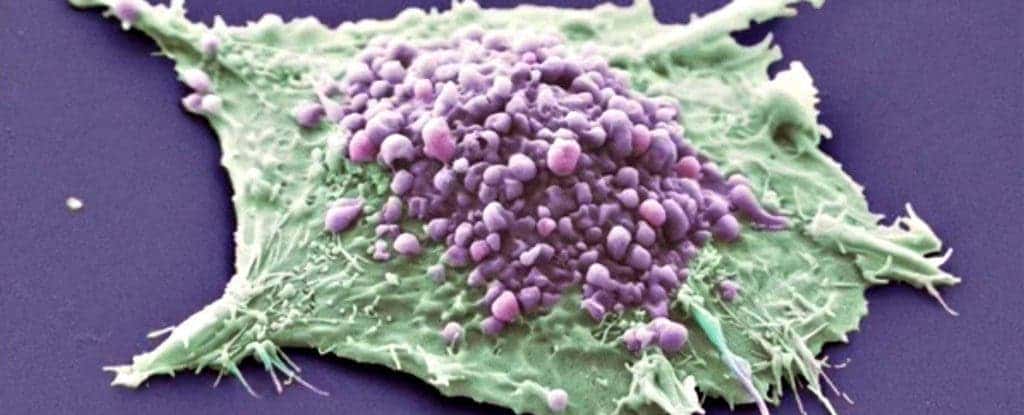In what could be a groundbreaking achievement, researchers report the results of the first tests of a universal cancer vaccine.

Researchers have reportedly persuaded the body’s cells to attack and destroy cancer cells, and cancer cells only. The results on mice and preliminary results on humans indicate that this technique could be used for tumors everywhere in the body, no matter what the type of cancer is.
Unlike the vaccines we’re familiar with, this one would work a little bit differently. It would be used on people who already have cancer, as opposed to people who are at risk of cancer. It works by basically shooting pieces of RNA from patients’ cancer cells at the body’s own immune system, metaphorically showing it the enemy and convincing it to fight against the cancer.
“[Such] vaccines are fast and inexpensive to produce, and virtually any tumour antigen can be encoded by RNA,” the team, led by researchers at Johannes Gutenberg University of Mainz in Germany, reports in Nature. “Thus, the nanoparticulate RNA immunotherapy approach introduced here may be regarded as a universally applicable novel vaccine class for cancer immunotherapy.”
Immunotherapy in itself isn’t a new concept. Using the body’s immune system to beat cancer has been used with success for years in cancer treatment, but this time it’s different. Techniques used until now relied on genetically engineering cancer-targeting immune cells in the lab, and then injecting them back into a patient. The whole process is laborious and expensive.
Meanwhile, this new approach is less invasive, cheaper and can target more times of cancers. It can be tweaked depending on the patient’s problems, which is a significant advantage.
Why this can actually work
Whenever a cure for cancer is brought up, we should be a bit skeptical. Firstly, why is this different than leaving the body to fight the cancer on its own?
“One reason is that cancer cells are similar in many ways to normal cells and the immune system avoids attacking the self,” explain Dutch immunologists Jolanda de Vries and Figdor in a commentary accompanying the Nature paper.
That means that your body’s immune system isn’t very good at telling apart cancerous cells from normal cells, so this is why researchers use an antigen – a “mugshot” which shows the body how to tell cancer apart from healthy cells. This kind of technology is pivotal for the vaccine.
“Only relatively modest immune responses occur with vaccines containing antigens that are also expressed on healthy tissue,” write de Vries and Carl Figdor. “Strong immune responses can be expected only when cancer cells express antigens that are not usually expressed in normal adult cells.”
This was already demonstrated in mice, but of course – proving the same in humans is a whole new ballgame. The team has trialed the vaccine with three patients with melanoma, and the purpose was to see if there are any adverse side effects – not to assess its effectiveness against cancer. The side effects were limited to mild, flu-like symptoms, which is way better than the side effects of chemotherapy, for example.
This process is standard procedure – before the effectiveness of any such treatment is addressed, its safety has to be ensured first. Now, the researchers will wait for 12 months to see whether there are any unforeseen events, and only after that can they move on to a proper study.
“By combining laboratory-based studies with results from an early-phase clinical trial, this research shows that a new type of treatment vaccine could be used to treat patients with melanoma by boosting the effects of their immune systems,” Aine McCarthy, the senior science information officer at Cancer Research UK, told The Telegraph.
“Because the vaccine was only tested in three patients, larger clinical trials are needed to confirm it works and is safe, while more research will determine if it could be used to treat other types of cancer.”
Even if we still have to wait a year for a clinical trial and even if this is just the early days of the treatment, this is still good news. It shows we’re making progress and it gives hope – the two crucial things we need to beat cancer.






